 Website:
Randox Laboratories
Website:
Randox Laboratories
Group: Randox
Catalog excerpts

A CLINICAL DIAGNOSTIC BIOMARKER FOR METABOLIC RISK ASSESSMENT
Open the catalog to page 1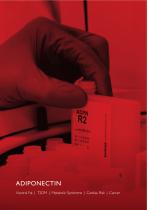
ADIPONECTIN Visceral Fat | T2DM | Metabolic Syndrome | Cardiac Risk | Cancer 2
Open the catalog to page 2
VISCERAL FAT: THE RISK FACTOR ADIPONECTIN IN THE ASSESSMENT OF T2DM RISK ADIPONECTIN IN THE ASSESSMENT OF METABOLIC & INSULIN CONCERNS ADIPONECTIN IN THE ASSESSMENT OF CARDIAC RISK ADIPONECTIN IN THE ASSESSMENT OF CANCER ORDERING INFORMATION RANDOX DIABETES TESTING PANEL RANDOX CARDIOLOGY TESTING PANEL RANDOX – A GLOBAL DIAGNOSTIC SOLUTIONS PROVIDER CONTACT US
Open the catalog to page 3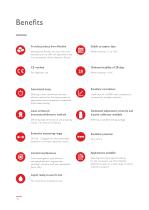
Benefits A niche product from Randox Stable to expiry date Meaning that Randox are one of the only manufacturers to offer the adiponectin test in an automated clinical chemistry format. Onboard stability of 28 days Automated assay Excellent correlation Offering a more convenient and time efficient method for the measurement of adiponectin levels compared to traditional ELISA based testing. Coefficient of r=0.989 when compared to commercially available methods. Latex enhanced immunoturbidimetric method Dedicated adiponectin controls and 6-point calibrator available Delivering high...
Open the catalog to page 4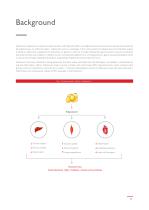
Background Adiponectin (adipocyte complement-related protein of 30 kDa (Acrp30)) is an adipokine (protein hormone) produced and secreted by the adipose tissue, an endocrine organ 1. Adiponectin acts as a messenger in the communication of adipose tissue and metabolic organs. In doing so, adiponectin suppresses the production of glucose in the liver through inhibiting the genes involved in glucose production and enhances fatty acid oxidation in skeletal muscle. Consequently, adiponectin is a strong protector against several pathological events in various cells through inhibiting inflammation,...
Open the catalog to page 5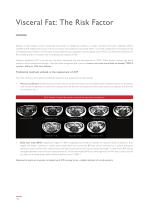
Visceral Fat: The Risk Factor Obesity, a major health concern worldwide and burden on healthcare systems, is a major risk factor for type 2 diabetes mellitus (T2DM) and IR. Adiponectin has an inverse correlation with abdominal visceral fat (AVF). Low levels of adiponectin increases the risk of metabolic abnormalities. Furthermore, excess adipose tissue, especially visceral adipose tissue (VAT) is an important risk factor for IR, correlating with an increased risk of cardiovascular disease (CVD) 4. However, abdominal VAT is not the only risk factor associated with the development of T2DM....
Open the catalog to page 6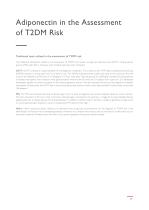
Adiponectin in the Assessment of T2DM Risk Traditional tests utilised in the assessment of T2DM risk The traditional biomarkers utilised in the assessment of T2DM risk include: oral glucose tolerance test (OGTT), fasting plasma glucose (FPG) and HbA1c. However, each of these tests have their limitations. OGTT: OGTT is treated as a "gold standard" for the diagnosis of diabetes. This is based on the 1979 National Diabetes Data Group (NDDG) decision to move away from six criteria to one. The NDDG evaluated three studies and came to the conclusion that the criterion for diabetes is a FPG level...
Open the catalog to page 7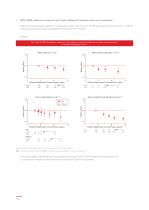
1. JAMA (2009): Adiponectin levels and risk of type 2 diabetes: A systematic review and meta-analysis Objective: A meta-analysis examined 13 prospective studies with a total of 14,598 participants and 2,623 cases of T2DM to review the association of plasma adiponectin levels and the risk of T2DM. Findings: Fig. 3: Risk of T2DM according to categories of total adiponectin levels for studies that provided results for quartiles or quintiles of adiponectin Levels 12 Relative Risk Relative Risk Median Adiponectin Concentration, μg/mL Cases Total Hoorn Study (Snijder et al.) Median Adiponectin...
Open the catalog to page 8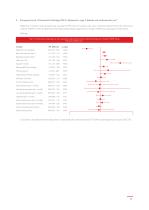
2. European Journal of Preventive Cardiology (2015): Adiponectin, type 2 diabetes and cardiovascular risk Objective: A Danish study prospectively evaluated 5,349 men and women who were randomly selected from the community, without T2DM or CVD to determine the relationship between adiponectin, incident T2DM and subsequent CVD events. Findings: Fig. 4: A multivariate competing risk Cox-regression proportional hazards model estimating risk of incident T2DM during 8.5 years of follow-up 13 Body mass index (per kg/m ) Plasma proBNP (per doubling) High sensitivity CRP (per doubling) Current...
Open the catalog to page 9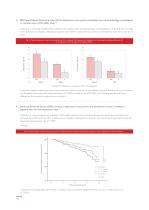
3. BMJ Open Diabetes Research & Care (2016): Adiponectin levels predict prediabetes risk: the pathobiology of prediabetes in a biracial cohort (POP-ABC) study 14 Objective: A US study prospectively evaluated 333 subjects from the Pathobiology of Prediabetes in A Biracial Cohort study which followed non-diabetic offspring of parents with T2DM to assess the occurrence of pre-diabetes over the course of 5.5 years. Fig. 5: Plasma adiponectin levels by race/ethnicity (A) and gender (B) among study subjects who developed prediabetes/diabetes (P) in comparison to the incident free subjects (NP) 14...
Open the catalog to page 10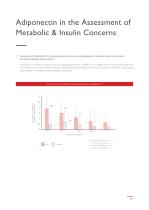
Adiponectin in the Assessment of Metabolic & Insulin Concerns 1. Nutrition and Diabetes (2011): Serum adiponectin level is not only decreased in metabolic syndrome but also in borderline metabolic abnormalities 16 Objective: A cross-sectional study involving 16,892 Japanese adults (10,008 men and 6,884 women) was conducted between April 2007 and November 2009 to assess the relationship between adiponectin levels and borderline metabolic / physiological abnormalities or metabolic syndrome (MetS) components. Fig. 7a: The number of metabolic syndrome components and adiponectin The number of...
Open the catalog to page 11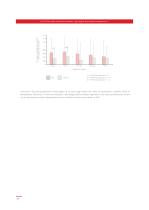
Fig. 7b: The number of borderline metabolic / physiological abnormalities and adiponectin The number of borderline metabolic / physiological abnormalities Adiponectin (μg/ml) Conclusion: Decreasing adiponectin levels begins at an early stage before the onset of hypertension, diabetes, MetS or dyslipidaemia. Moreover, in those with metabolic / physiological abnormalities, adiponectin is an important biomarker for the risk of atherosclerosis both independently and as a reflection of the accumulation of AVF.
Open the catalog to page 12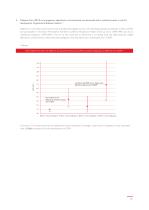
2. Diabetes Care (2013): Low pregnancy adiponectin concentrations are associated with a marked increase in risk for development of gestational diabetes mellitus 17 Objective: A US nested case-control study evaluated 256 eligible women who developed gestational diabetes mellitus (GDM) and participated in the Kaiser Permanente Northern California Multiphasic Health Check-up exam (1984-1996) and had a subsequent pregnancy (1984-2009). The aim of the study was to determine if circulating total and high-molecular weight adiponectin concentrations, measured before pregnancy, are associated with a...
Open the catalog to page 13All Randox Laboratories catalogs and technical brochures
-
LT735 Vivalytic Overview
32 Pages
-
Acusera New Controls
8 Pages
-
Acusera 24.7
24 Pages
-
Acusera Third Party Controls
108 Pages
-
Acusera SMART Controls
12 Pages
-
Company Overview
40 Pages
-
Reagents Brochure
64 Pages
-
sdLDL-C
8 Pages
-
RX SERIES ANALYSER OVERVIEW
24 Pages
-
RX modena
20 Pages
-
RX misano
20 Pages
-
RX Daytona Plus
20 Pages
-
Rx Imola
20 Pages
-
RX Monaco
20 Pages
-
2024 Product List
64 Pages
-
LT107 Evidence Investigator
32 Pages
-
VeraSTAT-V
16 Pages
-
LT033 RIQAS Explained
64 Pages
-
VERASTAT
16 Pages
-
Endocrine Array
4 Pages
-
Cerebral Arrays
4 Pages
-
Thyroid Arrays
4 Pages
-
Respiratory Multiplex Array
8 Pages
-
LT253 Molecular Diagnostics
20 Pages
-
LT367 FH Array Brochure
4 Pages
-
The role of EQA in QC
8 Pages
-
Basic QC Stastics
8 Pages
-
Commutability Guide
4 Pages
-
How to measure uncertainty
8 Pages
-
ISO 15189 Educational Guide
8 Pages
-
Troubleshooting QC Errors
8 Pages
-
Qnostics
52 Pages
-
Specific Proteins
40 Pages
-
Linearity sets
12 Pages
-
Antioxidants
16 Pages
-
Cardiology & Lipid Testing
28 Pages
-
Diabetes Portfolio
28 Pages
-
Total Bile Acids
4 Pages
-
VIVALYTIC
30 Pages
-
RANDOX DISCOVERY
36 Pages
-
HbA1c
2 Pages
-
Preparing QC
1 Pages
-
Point of Care Testing
12 Pages
-
LT394 Using QC Multirules
1 Pages
-
Guide to running QC
1 Pages
-
Tumour Marker Arrays
4 Pages
-
Which QC is the Right QC
8 Pages
-
How often is right for QC
6 Pages
-
Cardiac Risk Multiplex Array
4 Pages
-
LT241 Metabolic Array MAY15
8 Pages
-
KRAS / BRAF / PIK3CA Array*
4 Pages
-
Custom Arrays for Biochip
12 Pages
-
LT169 Cardiac Array
4 Pages
Archived catalogs
-
ACUSERA
108 Pages
-
Evidence Evolution
28 Pages
-
Evidence
16 Pages
-
Metabolic Syndrome Arrays
8 Pages
-
STI Multiplex Array
8 Pages
-
Molecular Testing
16 Pages
-
Evidence Investigator
20 Pages
-
Fertility Array
4 Pages
-
Rx Daytona
16 Pages
-
Evidence Investigator
16 Pages
-
Evidence
16 Pages





















































































